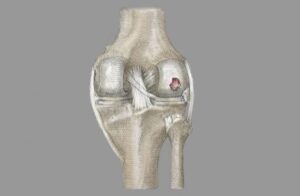In the vast realm of healthcare, where compassion intertwines with science, the cornerstone of any healthcare system is undeniably patient safety. Hospitals and healthcare facilities serve as sanctuaries of healing, and ensuring the well-being of patients is a sacred duty. In this intricate dance between care providers and patients, a harmonious symphony can only be achieved through the meticulous practice of patient safety measures. Let’s embark on a journey through the intricacies of patient safety, unveiling the best practices that serve as the guardian angels of healthcare.
The Bedrock: A Culture of Patient Safety
Picture a garden; its health depends on the soil in which it’s rooted. Similarly, the foundation of patient safety lies in cultivating a culture that prioritizes it. A robust safety culture involves every healthcare team member, from surgeons to janitors. Communication is the water that nurtures this culture, fostering an environment where reporting errors is encouraged and celebrated. This approach creates a sense of collective responsibility, transforming patient protection from rules to a way of life.
The Sentinel Watchmen: Robust Reporting Systems
Just as a vigilant sentry guards a fortress, a healthcare system’s reporting system guards against potential threats to patient safety. Implementing an efficient reporting system is akin to providing a voice to every healthcare team member. From near misses to adverse events, the power lies in learning from these experiences to fortify the defense against future incidents. Encouraging a blame-free reporting environment promotes transparency and empowers healthcare professionals to be proactive guardians of patient safety.
The Pinnacle of Preparedness: Simulation Training
In the high-stakes world of healthcare, preparation is the key to success. Simulation training emerges as a beacon of preparedness, allowing healthcare providers to rehearse complex procedures and emergency scenarios in a risk-free environment. This not only hones technical skills but also enhances teamwork and communication, fostering a sense of confidence and competence among the healthcare team. Patient safety is, after all, a performance that demands perfection.
The Art of Handoff: Seamless Transitions of Care
Patient care is a relay race, with each handoff between healthcare providers representing a crucial baton pass. Miscommunications and lapses during these transitions can lead to patient harm. Thus, mastering the art of handoff communication is paramount. Implementing standardized procedures, including electronic medical records, ensures that every piece of information gets preserved in translation. A well-executed handoff is not just a relay; it’s a seamless dance that safeguards the patient’s journey.
Ergonomics in Healthcare: Designing for Safety
In the intricate choreography of healthcare, the physical environment plays a pivotal role. Ergonomics, the science of designing workspaces to enhance efficiency and well-being, is a silent guardian of patient safety. Every element should be crafted with precision, from the layout of patient rooms to the medical equipment design. Ensuring a clutter-free and well-organized environment minimizes the risk of errors, allowing healthcare professionals to focus on what truly matters – the patient.
The Digital Guardians: Harnessing Technology for Patient Safety
In the age of innovation, technology emerges as a stalwart ally in the quest for patient safety. Electronic health records, barcode medication administration, and clinical decision support systems are the digital guardians that mitigate the risk of errors. Embracing technology streamlines processes and acts as a second pair of vigilant eyes, catching potential pitfalls before they transform into patient safety incidents.
Mindful Medication Management: Reducing the Risk of Adverse Drug Events
Medications are the elixirs that heal but can also pose risks if not handled with utmost care. Implementing best practices in medication management involves a multifaceted approach. From double-checking prescriptions to educating patients about their medications, the process demands meticulous attention. Pharmacists, nurses, and physicians form a united front, conducting regular medication reviews and embracing technology to minimize the risk of adverse drug events. In patient protection, mindfulness in medication management is the prescription for success.
Patient Empowerment: An Invaluable Shield
Patient safety is a collaborative effort, and empowering patients to participate actively in their care is a formidable shield against potential risks. Transparent communication about treatment plans, possible side effects, and the importance of adherence fosters a sense of partnership. Engaging patients as partners in their healthcare journey transforms them from passive recipients to vigilant guardians of their safety. Creating a resilient defense against preventable harm.
Continuous Learning: A Never-Ending Odyssey
In the ever-evolving landscape of healthcare, stagnation is the enemy of progress. Embracing a culture of continuous learning is the compass that guides healthcare professionals through uncharted territories. Regular training, participation in quality improvement initiatives, and staying abreast of the latest evidence-based practices are the pillars of this odyssey. Patient protection is not a destination; it’s a journey where each step forward represents a commitment to excellence.
Also Read:
- Leverage the Strength of Patient Reviews to Enhance Your Practice
- Patient Satisfaction: The Key to Success of Practice
Conclusion
In the grand tapestry of healthcare, patient safety is the golden thread that weaves through every interaction, every decision, and every triumph. The best practices outlined here are not mere guidelines; they are the instruments that compose the symphony of healing. As guardians of patient protection, healthcare professionals must stand united, armed with knowledge, technology, and a shared commitment to excellence. In this collective endeavor, patient protection transcends a duty – it becomes a sacred promise to uphold the trust bestowed upon the healers by those seeking solace and healing within the walls of healthcare sanctuaries.









